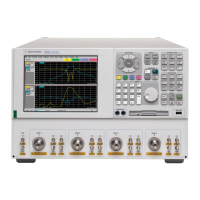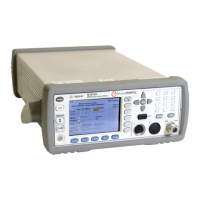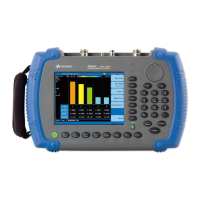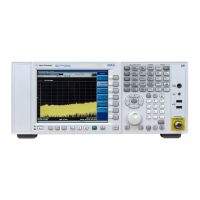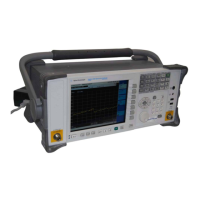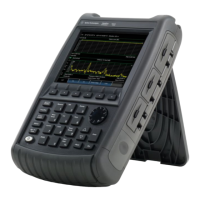5-6 Service Guide N5230-90024
Theory of Operation PNA Series Microwave Network Analyzers
Synthesized Source Group Operation N5230C
Synthesized Source Group Operation
The source group produces a stable output signal by phase locking a synthesized voltage-controlled
oscillator (VCO). Refer to Table 5-2 on page 5-8 for the full frequency range of the source. The outputs at the
front panel test ports are swept, stepped or CW signals. Maximum leveled output powers are listed in
Table 5-1 on page 5-4. For a simple block diagram of the source group, refer to Figure 5-2.
In this section the following are described:
• Basic Operation
• Frequency Offset Operation (Option 080)
• A7 and A9 Fractional-N Synthesizer Boards
• A6 and A8 Multiplier Boards
• A17 Multiplier/Amplifier/Switch/Splitter 26.5 (MASS 26.5)
• A18 Multiplier/Amplifier 26.5 (MA 26.5)
• A19 Multiplier/Amplifier/Switch/Splitter 50 (MASS 50)
• A10 Frequency Reference Board (including rear-panel interconnects)
• A16 Test Set Motherboard (including rear-panel interconnects)
Basic Operation
Table 5-2 on page 5-8 lists the L.O. harmonic number, the synthesizer frequencies (A7 and A9), and the main
source frequency (A17/A19) within the analyzer for each band. This table is referred to throughout this
chapter and also appears on the overall block diagram at the end of Chapter 4, “Troubleshooting.”
The A10 frequency reference board produces a constant phase locked reference signal of 5 MHz that is sent
to the A7 and A9 fractional-N synthesizer boards.
The A7 fractional-N synthesizer board produces an LO signal that is sent through the A6 multiplier to the
A20 mixer brick. The frequency is synthesized such that the mixing product of this LO signal with the test
signal output is a constant 250 kHz. This IF signal is sent to the A5 SPAM board for digital processing.
The A9 fractional-N synthesizer board produces an incident signal that is sent through the A8 multiplier
board and then either the A17 MASS 26.5 or the A18/A19 MA26.5/MASS50 to the front panel outputs. A
portion of this signal is either split or coupled off and sent to the A20 mixer brick where it is mixed with the
LO signal from the A6 multiplier board to produce the 250 kHz IF signal.
The A7 and A9 fractional-N synthesizer boards each contain their own phase lock circuitry. The A7 board is
used to phase lock the LO signal while the A9 board is used to phase lock the test signal. This makes it
possible for the LO signal to be tuned to a different frequency than the test signal, which is necessary since
the LO signal is normally 250 kHz higher than the test signal. Since the A7 and A9 fractional-N synthesizer
boards each receive their 5 MHz input reference signal from the exact same source, their outputs remain
in-phase even though they are at different frequencies.
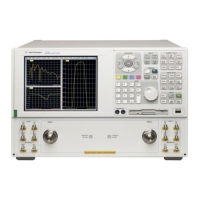
